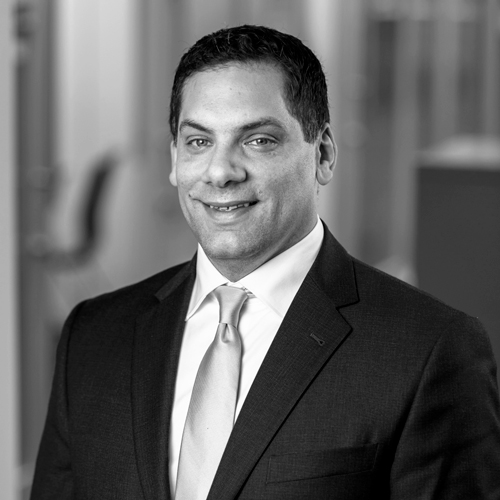New York native Alan Gallo started working for American Express (Amex) immediately after college. His training program consisted of six-month rotations in four different divisions. The breadth of that education and his success through the years enabled him to hold several executive positions in the company, including senior vice president of corporate planning and decision support, chief financial officer of the global consumer and small-business services group, and currently, as executive vice president of enterprise strategic initiatives. Here, Gallo talks to Profile about his cost-cutting initiatives and how his team plans to keep innovation at the center of Amex’s future.

What can you tell us about your new position?
In late 2014, the company asked me to create a new group called Enterprise Strategic Initiatives. The mandate was to tackle broad strategic questions the company had been grappling with and help get them resolved. No one had been playing that role, so some issues tended to linger.
To solve these issues, were you assigned a staff or did you put together your own team?
I selected about twenty people—90 percent of whom were already working for Amex—to serve as my swat team. They’re experts in the areas of finance, financial planning and analysis, project management, etc. In addition to this core group, whenever we take on a new issue, we usually form temporary ad hoc committees—or task forces, if you will—with expertise in the particular area we’re addressing.
What types of issues are you dealing with?
I’ll tell you about one on the revenue side and one on the expense side. On the revenue side, we wanted to improve the focus and coordination of our lending strategy and make sure all of the company’s assets could be brought to bear against that opportunity. I feel like we made a lot of progress on this in 2015. If you caught our investor day presentation in March, you would have seen a very focused company-wide strategy to meet the borrowing needs of our consumer and small-business clients.
On the expense side, we pointed out areas where we could eliminate overlap and duplication. Armed with this information, the company announced a cost-reduction program in January 2016 that is designed to save $1 billion by the end of 2017. Now we are heavily involved in implementing that plan.
Did that kind of project make you unpopular?
Yes, it is definitely a new experience for me to be cast as the bad guy. But one of the reasons I was given this job is that I’ve been with the company a very long time. I know how Amex works and am dedicated to its continued growth. I try to help everyone understand that perspective and present things in the most diplomatic and supportive way. Nothing that is worthwhile is easy, and some pain has to be expected when the market is changing around you. You have to adapt to survive and thrive. Thankfully, we have a leadership team across the company that understands the need for change and supports this initiative.
Is any of the pushback about executive compensation?
When it comes to senior leadership, we’re focusing primarily on the number of executives on our payroll. Cuts over the next eighteen months will definitely include some senior people. On the compensation front, we want to ensure that our pay structure is competitive with other companies of our size and complexity—both inside and outside our industry.
How has the financial services industry changed since you first joined Amex twenty-nine years ago?
The most interesting development I’ve seen is that buyers and sellers are now able to handle their payment transactions electronically. But even though it seems like everyone is doing it, the vast majority of the world’s payment transactions still involve people exchanging cash.
That is surprising. I guess we have a biased view here in the United States of just how widespread online and mobile payments have become.
Don’t get me wrong, it is definitely growing globally, but most purchases still involve people walking into a store and walking out with the goods they purchased.
So the big credit card companies such as Amex aren’t threatened by the new online and swipe payment systems?
The companies providing these services are exciting, and we take them very seriously, but we think they create more opportunity for the industry as a whole. In fact, we are always looking for opportunities to create ties with some of the more interesting payment startups—through partnerships and investments—to bring new capabilities to our customers and merchants. What most people don’t realize is that these online and mobile platforms rely on infrastructure developed and managed by the world’s biggest payment companies—Visa, MasterCard, Discover, Amex, etc.
Why is that?
We built the networks that provide the links between merchants, credit cards, and bank accounts, and they work extremely well. There are millions of merchants selling things. The rules, technology, and pricing that facilitate these transactions need to be consistent.
Not only is it very expensive and difficult to create your own merchant network, but why should you try to recreate the wheel when you can just partner with existing players who have scale?
Have any new players tried to set up their own merchant networks?
Yes, but most quickly decided to partner with the existing networks. Google, which first launched Google Wallet in 2011, is an example. PayPal created its own network in the peer-to-peer space to handle transfers between bank accounts, but that’s a small part of their business. Most of their customers use PayPal accounts, which are linked to traditional credit card accounts. Square, Google, PayPal . . . all of these programs are just the visible interfaces. The networks behind them that are actually making the transactions happen run on the infrastructure set up by Visa, MasterCard, Amex, Discover, etc.
It’s analogous to the railroad industry. Why would you bother to build new lines to travel to the same places when the existing ones work so well? The newcomers have definitely benefited from the traditional big players.
How does a company as heavily regulated as Amex inspire innovation?
That’s a great question, and one our CEO Ken Chenault addressed recently in a town hall. He did a brilliant job of connecting our regulatory construct with our obligation to serve customers and promote innovation. For example, there are many regulations regarding disclosure. He said we should aspire to be transparent with customers not because it is required, but because it’s the right thing to do. He said we should go beyond the minimum requirements and strive to be the most transparent company in our industry. He also talked about the importance of developing new products and services within the context of our regulatory framework.
As if your job doesn’t keep you busy enough, you’re also executive sponsor of campus recruiting and the job rotation program for American Express Finance, correct?
Yes. I love playing a part in recruiting and mentoring the next generation of finance professionals.
How does Amex ensure hires are not just well-qualified intellectually, but also a good cultural fit?
For finance, we hire mostly MBAs who have been summer interns with us. That means they’ve had a three-month interview and Amex work experience, so we know if we like them and vice versa. I think that is the secret behind our good hiring record and is another reason I’m so optimistic about the company’s future. I’ve worked here all my professional life. There is nothing I want more than to see it thrive. Both the ESI and recruitment roles put me in a position to have a positive impact on the company’s success, which is exactly where I want to be.

